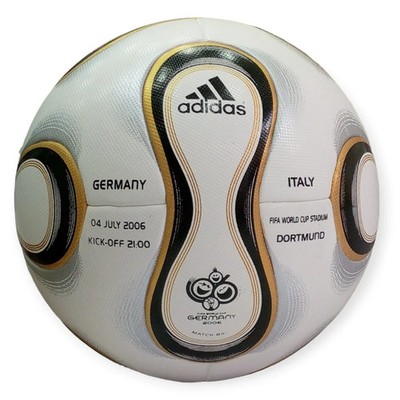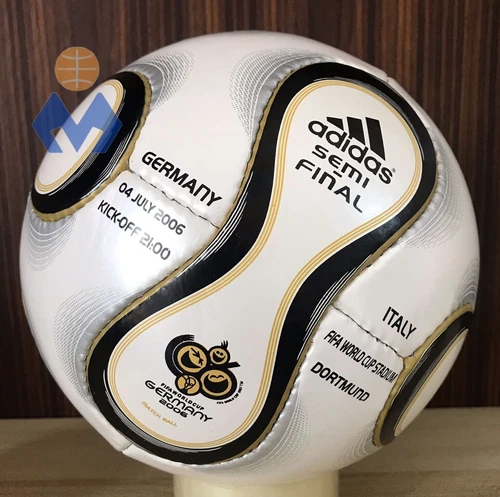Man, let me tell you, this whole thing started because I was watching some old highlights of the 2006 World Cup. You know, that beautiful ball, the Teamgeist? That thing was iconic. I just figured, hey, I got some cash saved up, why not grab one for the collection? Seemed easy enough, right? Wrong.

I dove straight onto the obvious sites, the big marketplaces, thinking I’d find a nice, reasonably priced piece of nostalgia. I spent maybe two hours scrolling before my head started spinning. I saw prices from fifty bucks all the way up to eight hundred dollars. What the hell was going on? I quickly realized most of the cheap stuff was absolute garbage—obvious knock-offs made last Tuesday that looked like they were printed on a cheap office printer. But the expensive ones? They looked suspicious too. Everyone was calling their ball “Official Match Ball” (OMB) when clearly half of them weren’t.
I was genuinely about to drop a significant chunk of change on something fake, just because I didn’t know the difference. That’s when I stopped searching and started studying. I decided I wasn’t buying anything until I could spot a fake ten feet away.
My Deep Dive: How I Learned Not to Get Scammed
I spent about two weeks just reading collector forums. Not the big, general sports memorabilia sites, but deep-dive Reddit threads and obscure European forums where people actually obsessed over the 2006 panel design. This research saved my butt, seriously. I compiled a list of non-negotiable checks.
First, you have to understand the product line. A lot of people sell training balls as official balls. If you see visible stitching, walk away immediately. The real 2006 OMB was thermally bonded. It’s smooth where the panels meet, not sewn like a cheap soccer ball from the nineties. If they try to tell you their stitched version is “rare” or “special,” they’re lying.
- The Panel Design: The Teamgeist used a specific fourteen-panel configuration that made it look like a propeller when you spun it. Look closely at the star-shaped joints. Everything must align perfectly.
- The Finish: The real OMB has a textured finish—it feels slightly rough, almost like orange peel texture, not slick or rubbery. Fakes usually miss this subtle detail and feel flat and cheap.
Second, I learned the critical identification spots that fakes always mess up. I focused my search entirely on sellers who were willing to provide extremely specific, high-resolution photographs.

I started contacting people, but I changed my approach. Instead of asking, “Is this real?” I started asking things like, “Can you show me a photo of the inflation valve and the text around it?” This instantly separated the honest sellers from the flippers.
If they can’t send these specific photos, walk away immediately.
- The Valve Area: The real ball has specific tiny text and production codes embossed right next to the valve. Fakes usually have blurry, poor-quality printing or the font size is completely wrong. If the seller sends a blurry photo of this area, they are hiding something.
- Country of Origin vs. Actual Production: Most real 2006 OMBs were made in Thailand or China, but they’re marked clearly. I cross-referenced the batch codes people showed me in the forums to make sure the expected manufacturing location matched what the seller claimed.
- The Weight Test: I found the official weight range online (around 440g). When I found a promising seller, I straight-up asked, “Can you put it on a kitchen scale and send me the picture of the weight?” One guy refused. Another guy sent a picture of a scale showing 380g—way too light, instant fake.
The Payoff: Landing the Real Deal
I spent about a week arguing with some guy in Italy who kept sending photos taken with a potato. He kept dodging the specific requests for valve alignment shots and texture close-ups. Total waste of time. I moved on from general marketplaces.
I finally found a guy on a dedicated vintage football collector forum—not a sales forum, a sharing and discussion group—who was downsizing his own personal collection. This was the key. This guy knew his stuff cold. When I asked about the subtle reflective sheen of the bonding and the exact feel of the texture, he didn’t hesitate.
He immediately sent crystal-clear photos showing the embossed serial numbers next to the valve. He even pointed out a minor surface mark, which demonstrated he wasn’t trying to hide anything. We haggled a bit. He was asking $480, which felt fair for a decent condition OMB, but I managed to knock him down to $430 by agreeing to cover the shipping myself.

Paid him via secure transfer after confirming every last detail. When the box arrived three days later? Man, that smell. That texture. It was absolutely the real deal. It was perfectly inflated, holding air beautifully, and the minute I held it, I knew I hadn’t been ripped off. The lesson learned? Don’t rush. The people selling fakes want you to panic-buy. Slow down, get obsessive about the details, demand proof that only an authentic item can provide, and seek out serious collectors, not general online merchants. It took three weeks of hard looking, but I got my piece of history, and I saved myself hundreds of dollars in the process.
